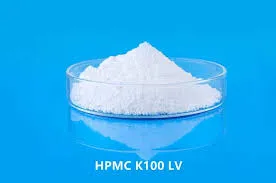
Nov . 27, 2024 10:59 Back to list
Understanding the Viscosity Properties of Hydroxyethyl Cellulose for Diverse Applications
Understanding Hydroxyethyl Cellulose and Its Viscosity Properties
Hydroxyethyl cellulose (HEC) is a non-ionic, water-soluble polymer derived from cellulose, a natural polymer obtained from the cell walls of plants. HEC is widely used in various industries due to its unique properties, particularly its ability to modify viscosity in aqueous solutions. This article will explore the characteristics of HEC, its viscosity properties, and its applications in various fields.
Chemical Properties and Structure
HEC is created through the chemical modification of cellulose, where hydroxyethyl groups are introduced into the cellulose structure. This process enhances the solubility and functionality of cellulose, allowing it to dissolve easily in cold water. The degree of substitution—referring to the average number of hydroxyethyl groups per anhydroglucose unit—affects the properties of HEC, including its viscosity, solubility, and hydrophilicity.
The viscosity of HEC is a crucial parameter that influences its performance in various applications. Viscosity refers to the thickness or resistance to flow of a fluid, and it plays a key role in how substances behave in formulations. The viscosity of HEC can vary significantly based on factors such as concentration, temperature, pH, and the specific grade of HEC used.
Viscosity Characteristics of HEC
The viscosity of hydroxyethyl cellulose solutions can be affected by its molecular weight and concentration. Generally, HEC with a higher molecular weight exhibits higher viscosity at the same concentration, creating a more substantial thickening effect. This feature is particularly important in formulations requiring specific flow behavior, such as paints, coatings, and construction materials.
Temperature also significantly impacts the viscosity of HEC solutions. As the temperature increases, the viscosity tends to decrease due to the reduced molecular interactions and increased kinetic energy of the polymer chains. Conversely, when cooled, the viscosity increases, leading to a more gel-like consistency. This thermosensitive nature of HEC makes it an attractive option for products that require adaptability to temperature changes.
hydroxyethyl cellulose viscosity

Another critical factor influencing HEC viscosity is pH. Hydroxyethyl cellulose remains stable across a wide pH range, but the viscosity may vary. At extreme pH levels, the interactions between the polymer chains can be altered, impacting overall viscosity. Understanding how pH influences viscosity is crucial for formulations in industries like cosmetics and pharmaceuticals.
Applications of Hydroxyethyl Cellulose
HEC is widely recognized for its versatility and is used in various applications across different industries. In the construction field, HEC enhances the workability of cement and mortar, improves water retention, and prevents segregation. As a thickening agent, it provides the desired consistency for various adhesive formulations.
In the food industry, HEC serves as a stabilizer and thickener, contributing to the texture and mouthfeel of products such as sauces and dressings. Its ability to create stable emulsions is particularly valued in this domain.
In pharmaceuticals, HEC is employed as a binder in tablet formulations and as a thickener in liquid medications. Its non-toxic nature and excellent compatibility with other excipients make it a popular choice.
In the cosmetic industry, HEC is utilized in lotions, creams, and shampoos for its thickening properties, enhancing the product's aesthetic and sensory characteristics.
Conclusion
Hydroxyethyl cellulose is a remarkable polymer with unique viscosity properties that make it suitable for various applications. As industries continue to evolve, the demand for effective and adaptable thickeners like HEC will likely grow. Understanding the factors that influence its viscosity is crucial for optimizing formulations and ensuring product performance across different applications.
-
HPMC for Tile Adhesive: Superior Bonding & Workability
NewsAug.30,2025
-
Premium Cellulose Ether: Effective Liquid Thickener Solutions
NewsAug.29,2025
-
HPMC for Tile Adhesive: Enhanced Bonding & Workability
NewsAug.28,2025
-
tile-bonding-additives-for-stronger-bonds
NewsAug.22,2025
-
construction-grade-rdp-for-wholesale-needs
NewsAug.22,2025
-
trusted-hec-supplier
NewsAug.22,2025







